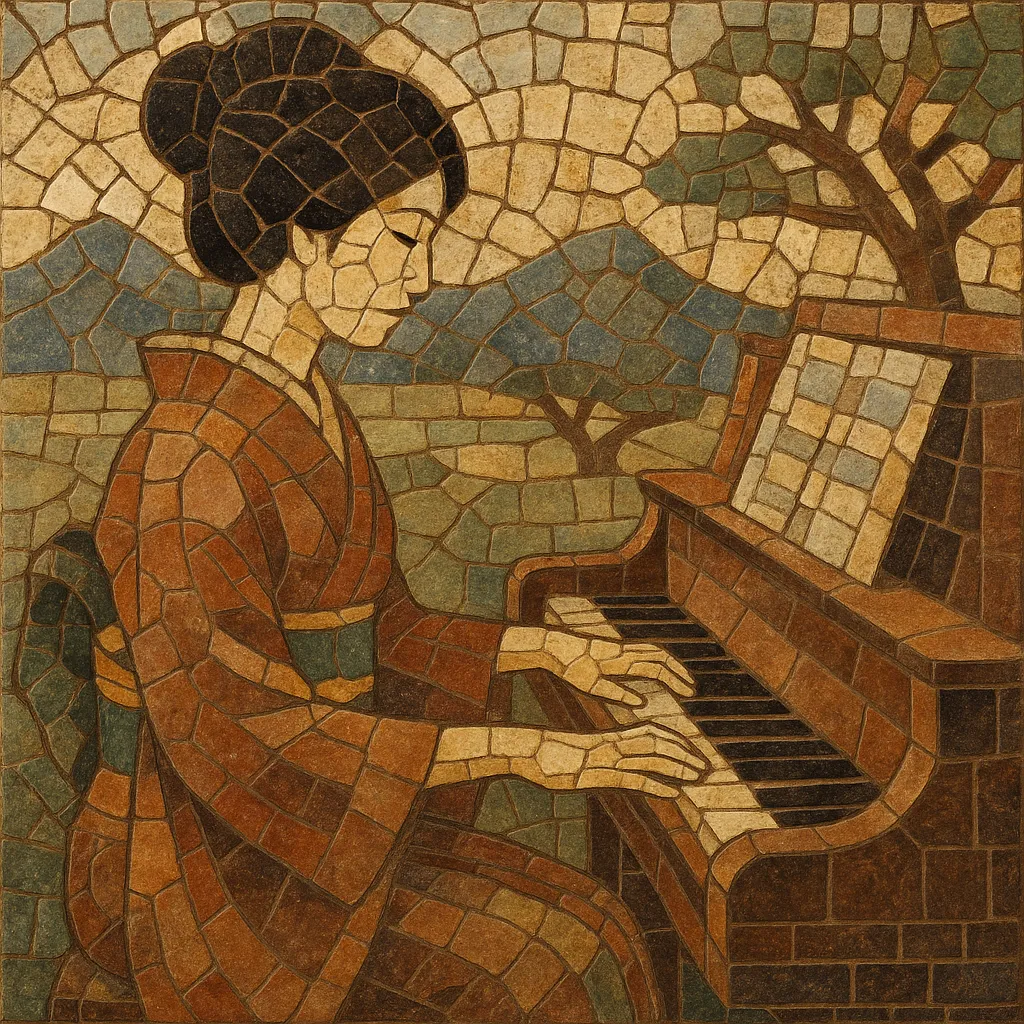Meiji shinkyoku refers to "new songs" composed during Japan’s Meiji era that blended Western tonal harmony and forms with Japanese language and poetic sensibilities. Emerging alongside the country’s rapid modernization, these pieces typically feature diatonic melodies, functional harmony, and strophic song forms reminiscent of European art song and parlour music.
Arrangements were commonly for solo voice with piano or reed organ, though wind and brass band instrumentation was also used in school and military contexts. Rhythms often draw on waltzes and marches, while the lyrics favor refined diction and imagery, mirroring contemporary "new-style" poetry. As a bridge between traditional Japanese vocal genres and later popular song, Meiji shinkyoku helped establish the sound world that led to ryūkōka, kayōkyoku, and ultimately J‑pop.
With the Meiji Restoration, Japan instituted Western-style music education through institutions such as the Tokyo Music School. American and European educators introduced solfège, harmony, and the school-song tradition, while military and civic bands popularized marches and concert pieces. This influx of Western pedagogy and repertoire catalyzed a generation of Japanese composers to write new, vernacular songs in Western styles.
By the 1890s, "shinkyoku"—literally "new songs"—became a recognizable practice: composed strophic pieces for voice and piano/organ featuring Western diatonic harmony, lyrical melodies, and literary Japanese texts. Works such as Rentarō Taki’s songs established a model that balanced European art-song idioms with local poetic themes and prosody. The pieces circulated in salons, schools, and early sheet-music markets, and were later recorded as domestic recording technology emerged.
School systems and military bands played a crucial role in disseminating the style. Hymn-like textures, waltz and march rhythms, and clear homophonic settings made the repertoire easy to teach and to perform. Gramophone records in the 1900s further broadened reach, helping to normalize Western tonal language among general audiences while keeping Japanese lyrics at the center.
As Japan entered the Taishō era, Meiji shinkyoku’s techniques fed directly into early popular styles such as ryūkōka and later kayōkyoku, shaping melodic contour, harmonic expectations, and vocal delivery. Its influence can be felt in enka’s sentimental expressivity and, through kayōkyoku, in the broader lineage that leads to modern J‑pop. Though historically situated, Meiji shinkyoku remains a pivotal bridge between traditional Japanese vocal music and Western-influenced popular song.
Use Western diatonic harmony (major/minor) with simple functional progressions (I–IV–V–I and ii–V–I). Modulations are modest—often to the dominant or relative key—and cadences are clear and songful.
Compose lyrical, singable melodies with limited chromaticism. Favor strophic or verse-refrain structures so that text stanzas can be repeated over the same music. Aim for clear phrase symmetry (e.g., 4+4 or 8+8 bars) and memorable openings.
Borrow from parlour waltzes (3/4) and marches (2/4 or 4/4). Keep tempos moderate to support expressive diction. Rhythms should be straightforward, emphasizing vocal clarity over virtuosity.
Score for solo voice with piano or harmonium/organ. Simple chordal accompaniments (block chords, alberti figures, or broken chords) work well. For larger settings, consider wind or brass band doubling the vocal line and providing homophonic support.
Set literary Japanese texts with clear prosody and dignified tone. Themes often include nature, seasons, nostalgia, and sentiment. Vocal delivery should be poised and expressive, with modest vibrato and careful enunciation.
Keep ornamentation restrained—occasional appoggiaturas or turns are sufficient. Dynamics should follow the text’s rhetoric, shaping phrases with crescendos and diminuendos rather than extremes.


